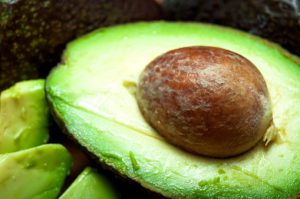 HDL cholesterol, also known as “good” cholesterol, is responsible for removing “bad” LDL cholesterol from areas of the body where it does not belong. Low HDL cholesterol levels put you at a higher risk for developing heart disease. High HDL levels, on the other hand, reduce the risk. Hence, it’s important to find natural ways of boosting your good cholesterol in order to lower your risk of heart disease and other health problems.
HDL cholesterol, also known as “good” cholesterol, is responsible for removing “bad” LDL cholesterol from areas of the body where it does not belong. Low HDL cholesterol levels put you at a higher risk for developing heart disease. High HDL levels, on the other hand, reduce the risk. Hence, it’s important to find natural ways of boosting your good cholesterol in order to lower your risk of heart disease and other health problems.
HDL stands for high-density lipoprotein. As the name implies, it is quite dense, compared to other cholesterol molecules. Cholesterol is fat, essentially, but that doesn’t necessarily mean it’s bad. We need cholesterol for stability of the cells in our body.
Advertisement
HDL cholesterol is responsible for a number of functions. It removes LDL cholesterol so that it doesn’t stick to artery walls and make them stiff. It reduces, reuses, and recycles LDL cholesterol by transporting it to the liver. It maintains the health of the inner walls of blood vessels – otherwise, the vascular damage can lead to atherosclerosis and a heart attack.
Healthy HDL cholesterol levels are over 60 milligrams per deciliter. If your HDL readings are below 40 milligrams per deciliter, you’re too low. The good news is, you can naturally boost your HDL cholesterol through diet and other means to help lower your risk of cardiovascular disease.
Foods that increase your HDL cholesterol
Here are the foods that you can easily incorporate into your heart-healthy diet to either help lower your LDL cholesterol or boost your HDL cholesterol levels.
Oats: Changing you morning meal might be the simplest way to whittle down your LDL cholesterol (the bad kind). By taking two servings of oats, you can lower LDL by 5.3 percent in only six weeks. Oats contain beta-glucan, which plays a key role in LDL removal and excretion from the body.
Nuts: A study shows that people lowered their total cholesterol by 5.4 percent and LDL cholesterol by 9.3 percent by taking 1.5 ounces of walnuts six days a week for one month. Details of the study can be gleaned from the American Journal of Clinical Nutrition. And just to make it easy for you, 1.5 ounces is about a shot glass and a half.
Tea: The world knows tea contains a lot of antioxidants to fight inflammation. In some cases, it even fights cancer. Not many people know, however, that tea is also a great defence against LDL cholesterol. According to research conducted with the USDA, black tea has been shown to reduce blood lipids by up to 10 percent in only three weeks.
Beans: Researchers at Arizona State University Polytechnic found that adding ½ cup of beans to soup lowers total cholesterol, including LDL, by up to eight percent. The fiber content in beans plays an important role in limiting the absorption of dietary cholesterol.
Olive oil: This staple ingredient of the Mediterranean diet has found its way to the shelves of grocery stores worldwide. The reason? It is full of heart-healthy monounsaturated fatty acids, which can help lower LDL cholesterol. Olive oil has the added benefit of helping keep your waistline where you want it to be.
Fatty fish: Fatty fish are loaded with omega-3s, which can help raise HDL levels. According to research from Loma Linda University, replacing saturated fats with omega-3s like those found in salmon, sardines, and herring can raise good cholesterol as much as four percent.
Red wine: The Mayo Clinic suggests that red wine in moderation can reduce heart disease. The antioxidants in red wine increase the HDL levels to protect against artery damage.
Chocolate: Chocolate is good for you. And even better for your arteries. In a 2007 study, participants showed a 24 percent increase in HDL levels after taking cocoa powder over a period of 12 weeks. In the same study, people in the control group showed just a five percent increase in HDL. The full details of the study are published in the American Journal of Clinical Nutrition. Remember to choose the dark or bittersweet kind.
Avocados: This vegetable/fruit is a great source of heart-healthy monounsaturated fat, a type of fat that may actually help raise HDL cholesterol while lowering LDL. And, more than any other fruit, this delectable food packs cholesterol-smashing beta-sitosterol, a beneficial plant-based fat that reduces the amount of cholesterol absorbed from food. However, too much avocado can add to the waistline.
Grass-fed meat: If you want heart-healthy meats, you need not look beyond grass-fed meats. They tend to be much lower in total fat than grain-fed meats. A sirloin steak from a grass-fed steer has almost one-third the amount of fat as a similar cut from a grain-fed steer. In fact, grass-fed meat has as little fat as a skinless chicken. Meat this lean can actually lower your “bad” LDL cholesterol levels. The other advantage of grass-fed meat is its low calorie count.
Whole grains: According to Harvard research, eating whole grains substantially lowers total cholesterol, bad cholesterol, triglycerides, and insulin levels. Any of these changes can reduce the risk for cardiovascular disease.
Many people think they are being healthy by eating multi-grain bread. This is junk food masquerading as healthy. You are much better off eating straight-up barley, brown rice, quinoa, or steel-cut oats.
Dark chocolate: Chocolate contains flavonoids that act as antioxidants, which help the cardiovascular system. When Harvard researchers studied the effects of cocoa flavonoids on heart health, they found that the flavonoids reduced unhealthy LDL cholesterol, blood pressure, and insulin resistance, while increasing healthy HDL cholesterol and improving blood flow.
Advertisement
So as you can see, all cholesterol-busting foods might not work well for you. Your first step is to determine (with the help of a blood test) whether you have a low HDL problem or a high LDL problem, and then choose your foods wisely.
Tips to raise your good cholesterol
 Along with an HDL-boosting diet, there are other ways to raise your good cholesterol:
Along with an HDL-boosting diet, there are other ways to raise your good cholesterol:
- Exercise regularly
- Lose some weight
- Take a look at your genetics – sometimes cholesterol issues are inherited
- Promote good gut bacteria with probiotic-rich foods
- Reduce stress
- Quit smoking
- Reduce your intake of dietary saturated fats
- Limit your intake of simple carbohydrates
- Keep alcohol consumption to a minimum
By following these natural tips, you can have greater success in improving your HDL cholesterol all the while lowering your LDL levels.
